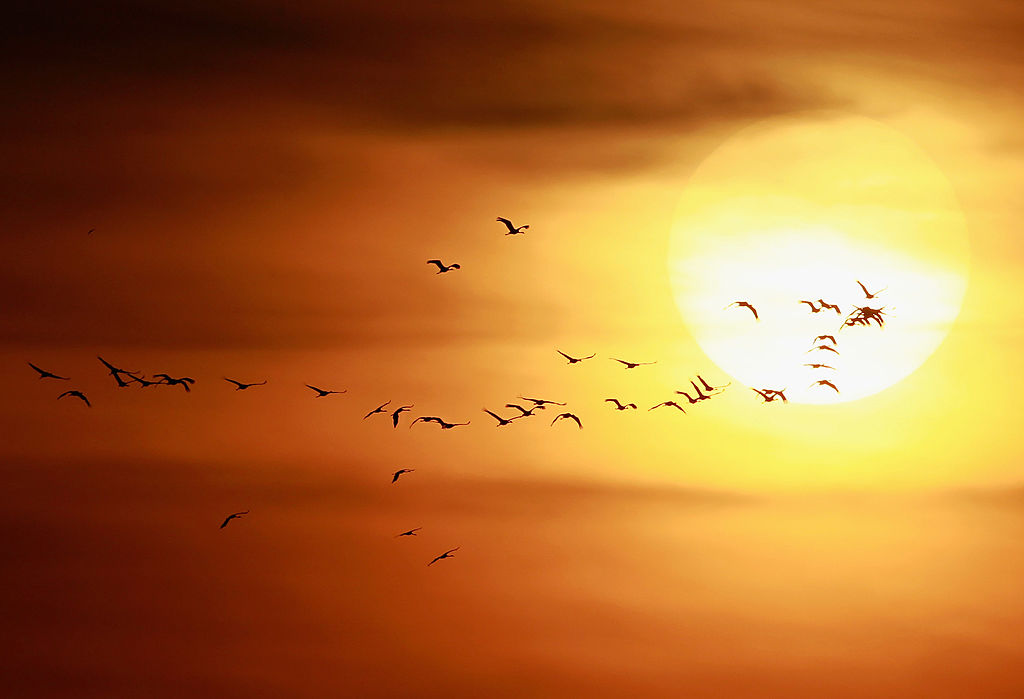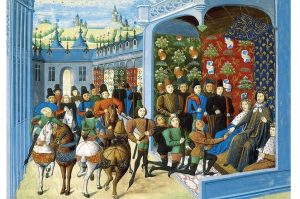You can forgive those Brits who forget they live on an island. Motorways, next-day delivery and WiFi all distance residents of the United Kingdom from the physical margins of their country, but the limitations of geography are at the heart of a rhapsodic book that traces the astonishing declines of the British Isles’ native birds.
In Search of One Last Song is the debut book by Patrick Galbraith, the editor of Shooting Times, the UK’s largest-circulation hunting and shooting publication. This earthy travelogue transports readers to foggy moors and wind-blasted coastlines and gentle fields across Great Britain as Galbraith pursues leads of flocks in utter trouble.
He takes us to northern Scotland’s storm-battered headlands that no longer shriek and wail with wind-riding kittiwakes. The dainty gulls are disappearing as changing ocean currents carry sand eels, the obligate food for these cliff-nesters, far from the coast. Farther south, Europe’s largest grouse, the royal capercaillie, can scarcely be found in highlands once forested in gnarly Scots pines. Mature wind-slanted trees, essential for predator-evading roosts, have been replaced with open moorland or straight-growing pines of manicured plantations.
In East Anglia, ravenous muntjac deer, whose ancestors were imported from India by Victorian sportsmen, are destroying the tangled brambles from which nightingales have for centuries serenaded poets and plowboys. Even the ground-nesting corncrake, which for generations of Hebrideans has signaled seasonal change, is disappearing from the stone-walled crofts as tractors handle more of the haying on Scotland’s western coast and barrier islands. Cryptic corncrakes calling in the night was once a cue for fishermen to repaint their boats; the fish would soon be in.
But if these and other birds — water-wading bitterns, the patrolling harrier, the romantic turtledove — have come to represent British tradition and constancy, their disappearance represents more than the loss of feather and song. As Galbraith poignantly describes in every chapter, the astonishing decline of sentinel species of birds represents nothing less than the loss of British identity.
“When birds are gone, a place changes, and the people change too,” writes Galbraith, whose book is less about those disappearing birds than about the people whose life’s work is fighting to keep them in the sky above rural Britain. This is no clinical ornithological autopsy. Instead, it’s a series of intimate portraits of remarkable people for whom birds represent a personal and cultural identity.
Galbraith writes of Graham Denny, a gruff Suffolk farmer whose love of turtledoves has sparked restoration of hedges and ragged field edges on his 200-acre farm. He introduces us to Luke Steele, a tattooed animal-rights activist who has done prison time for disrupting grouse hunts and sabotaging research labs. Steele now tags harriers with radio transmitters to monitor their fate around commercial grouse-hunting estates, trying to prove that gamekeepers are still killing raptors, even after passage of the Wildlife and Countryside Act made that the practice illegal.
We meet the gritty residents of Manchester who monitor lapwing nests amid housing developments being thrown up on drained and filled tidelands. Populations of lapwings have plunged with the draining of marshes and with the widespread use of insecticides that have killed crop-damaging crane fly larvae, the main food source for the bug-eating birds.
“I think they should almost be our national bird,” one lapwing enthusiast tells Galbraith. “I just think they can link the urban and rural. They want moorland and waste ground and farmland, but I’ve even seen them roosting on B&Q,” the Home Depot of Great Britain. In many ways, Galbraith’s book does just that, linking urban and rural bird enthusiasts, but along the way he tells the stories of a nation in slow, deliberate transition away from the countryside.
Galbraith writes with an intimacy and fondness that connects readers to the birds through their quirky defenders. We follow Galbraith’s discovery of a leather-bound ledger that contains an estate’s game records. In October 1910, it recorded a bag of 114 black grouse, likely the largest single-day take in Britain. The 6,000 pairs of the native grouse that remain in the UK owe their pres- ence to people like Patrick Laurie. He’s slowly restoring the moor by grazing native cattle that select for grasses that can choke out native heather and barberry, both critical components of black grouse diet.
Galbraith is an unexpectedly gracious host. Readers of his publication could be considered accelerants for Britain’s bird loss. Wild-bird diversity is lower on managed grouse estates than on neighboring lands that aren’t managed for high-volume commercial shoots, a situation that suggests to regulators that gamekeepers are illegally killing predatory birds. Poisoning from lead shotshell pellets has also been identified as a cause of bird mortality.
Yet Shooting Times subscribers also represent rural Britain, and they are stewards of the vast majority of the UK’s remaining bird habitat. Galbraith’s book translates environmental awareness into a language that hunters and shooters, who might pick it up to read about grouse and partridge conservation, can comprehend. For birdwatchers interested in reading about the plight of nightingales and corncrakes, Galbraith offers a reality suggesting that, as rural subdivisions proliferate and as farms get larger and more mechanized, estates managed for grouse will also be sanctuaries for thrushes and kestrels.
For American readers, who still imagine a country with a wide, largely empty Western frontier, Galbraith’s book is a reminder of the tyranny of borders. Great Britain simply has no more room, and its watery edges are real. As lapwing habitat dries and shrinks, the birds can shift only so far up the coast. Doves that winter in Morocco must have suitable summer habitat in Essex. Grouse cannot fly the North Sea to pioneer new coverts in Sweden.
We in America still have both room and time to conserve our declining species. Our own imperiled sage grouse can benefit from the same deep knowledge that’s informing black grouse conservation in southern Scotland. The loss of our bobwhite quail can be slowed by employing the same messy farming practices that benefit gray partridge in East Anglia. American readers should recognize the same mournful loss of our monarch butterfly that Galbraith details in those documenting the slow, inexorable extinction of Scotland’s capercaillie.
But reversing declines requires careful listening, and that’s the great gift of Galbraith’s book. Listen as he does, to the fondness of an old caretaker for his starlings, and to the longing of Norfolk’s reed-thatchers for the “velveteen boom” of fenland bitterns. Listen, and be transported to the parts of Great Britain that are indisputably worth saving.
This article was originally published in The Spectator’s October 2022 World edition.


















